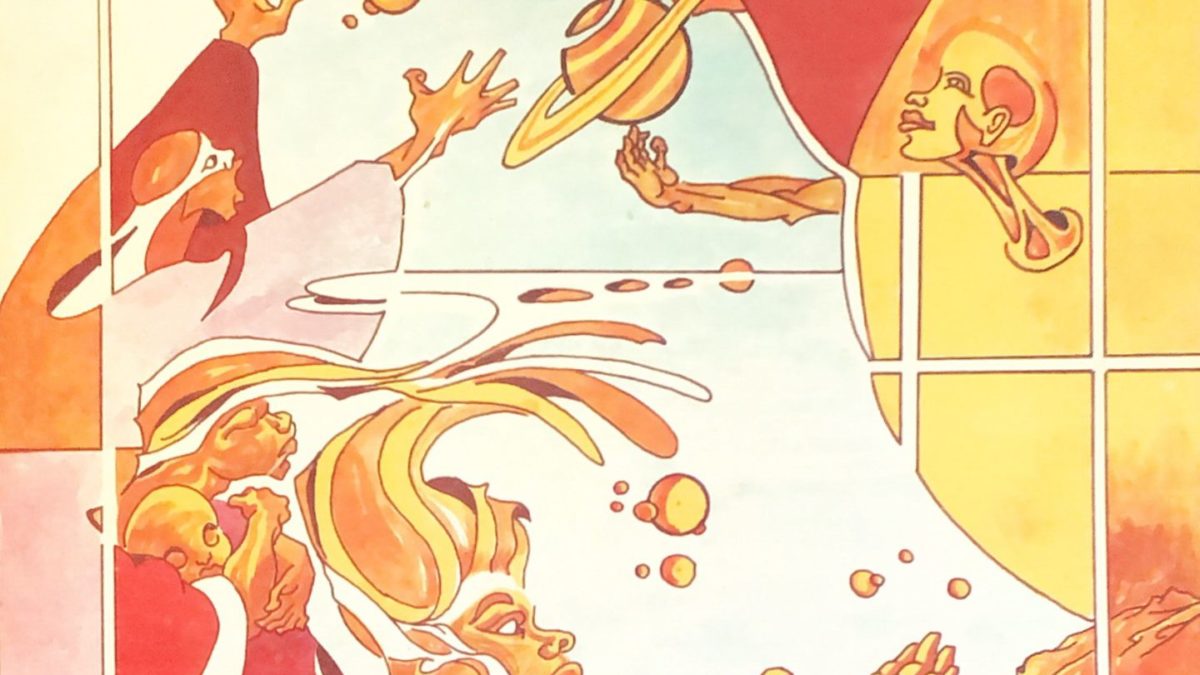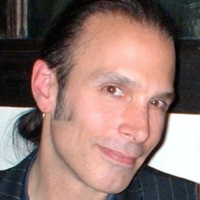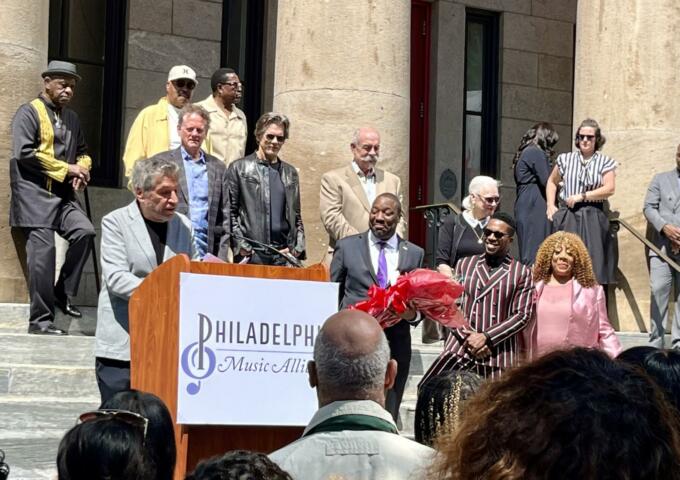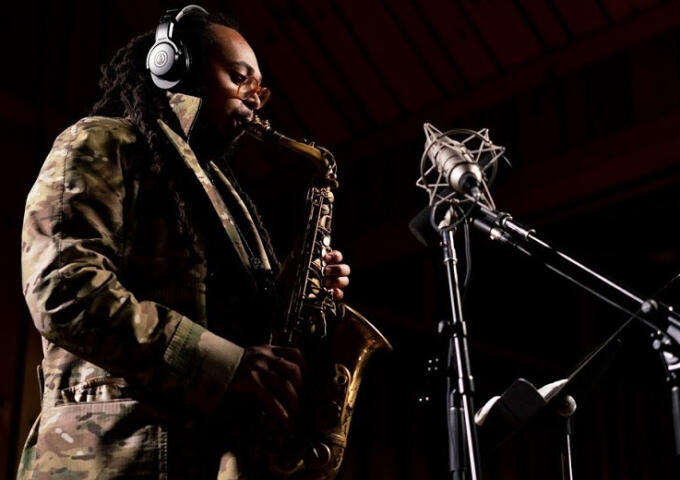If space is the place, quite famously, for avant-garde musical icons Sun Ra and Marshall Allen, the terra firma of Germantown is just right for Leroy Butler, the renowned Afro-conscious painter and album cover artist for Ra, and that same neighborhood’s equally free, Sounds of Liberation.
“Pen and ink, scribbling it down in pencil, then coming back and inking in the lines I wanted to keep,” said Butler in a raspy voice from his home on East Tulpehocken Street, which is a style he termed his own. “I really loved that. That’s probably what saved me, kept me off the streets. I’d rather stay at home and draw, portrait drawing in particular. That’s what I was most comfortable with.”
On Thursday, June 13, while Allen – the leader of the Germantown-based Arkestra started by the late, great Ra – celebrates his 95th birthday on the stage of Union Transfer, Butler, 93, will appear in the concert hall’s lobby, feted by a mini-exhibition of his work and an autograph signing opportunity for Sounds of Liberation’s recently-excavated live album, “Unreleased (Columbia University 1973).”
As he did for the free jazz-funk outfit’s 1972 debut, “New Horizons,” Butler once executed a poignant, Afro-centric line drawing for the new album’s cover. But just as Max Ochester (the owner of Brewerytown Beats and Dogtown Records) had to sift through detritus to find the lost tapes of “Unreleased,” he had to dig deep to find Butler and that Sounds of Liberation’s dynamic sophomore album cover sketch.
Butler has forever been part of the Germantown landscape. Born at Chestnut Hill Hospital where he claimed, “they didn’t want black people in that hospital…they didn’t even give me a proper birth certificate,” and one year after his people arrived from Georgia (“they were sharecroppers”), Butler may have gravitated toward graphic arts as a means to keep him off the streets. “When I was in the military…guys started to notice my drawings and asked for me to draw on their letters back home to their families. I would charge a little for that. I also would draw risque pictures for other guys in the military. That got me in trouble one time.”
Once home, Butler may have gravitated toward drawing to keep him out of trouble. Meanwhile, his drawings also gravitated to those in the know from Germantown’s socio-politicized African-American consciousness movement of 1967-68, namely by that neighborhood’s conscious jazz musicians.
“My work was first recognized by Byard Lancaster,” said Butler of the Philly saxophonist who was then set to join the newly-forming Sounds of Liberation with vibraphonist Khan Jamal and guitarist Monnette Sudler. “After seeing my drawings, he asked if I would draw a piece to be used for his band. He loved what I came up with. But, at the time, Byard didn’t have any money. I gave him the piece anyway. A little later, Byard started to make some money, and from that first payment on, Byard would — every-time he saw me — do what he called ‘the flatted fifth.” He would raise his hand with a $5 or $10 dollar bill pinched between his thumb and forehand. I would put my hand out, palm up, showing I received his signal, and he would walk up and slap my hand with the bills. He did that every time he saw me until he passed, 40 or 50 years later. Every time.”
Not so generous with the money, but free with his music, was Sun Ra, for whom Butler crafted a handful of the pianist-orchestra leader’s most spirited cover paintings and drawings for 1973’s “Discipline 27-II,” 1976’s “Sun Ra And His Arkestra/Featuring Pharoah Sanders / Featuring Black Harold” and 1983’s “A Fireside Chat With Lucifer.”
“Ra was a storyteller, and when he moved here his reputation preceded him, at least from what I heard,” Butler said. “He never paid for anything. Sun Ra never paid anyone, not me, not anyone. I think that’s why he moved all the time.”
Butler knew Marshall Allen from hanging out with the band, but was closer with John Gilmore, the legendary saxophonist who rarely left Ra’s side. “He was so loyal to Sun,” said Ra of Gilmore. “John was asked to play with other bands and he would always turn them down. He just stuck with Ra.”
Other artists worked with Ra, including James Bryant, Aye and Claude Dangerfield, but Butler’s torrid tones and sensuous lines stood out for their vitality, his drawings as complex and vigorous as Ra’s music.
“I liked the music Sun Ra played,” Butler said. “I would be at his house and just ask him to play something for me. He would sit at the piano and play ‘Shortnin, shortnin, shortnin bread. Momma’s little baby loves shortnin bread.’ He’d play that, then John [Gilmore] would come in with that tenor sax, and then one by one the rest of the guys would come in, and soon enough, I had a whole concert in front of me. That’s how Sun Ra and I would work. He would play and I would draw.”
Butler laughed as he talked of Ra, Allen and the gang in a live setting, playing jazz. “And then all of the sudden it would go to pieces,” he said. “It would become very chaotic. He liked to go into his chaotic music, but the audience didn’t always like it. They would get up and go to leave and Ra would notice and go back to playing straight jazz. Once the audience settled again he would go back to being chaotic. He did that over and over again. He would play the audience – he liked the control of it.”
The other thing Ra ultimately wanted control over was Butler’s drawings. Ra wasn’t particular about what was drawn, in Butler’s estimation, as long as it was unusual. “Never disapproved anything, he would take anything I did,” Butler said. Ra did, however, draw all over Butler’s work, in what is the ultimate show of bad behavior.
“I didn’t like that at all,” Butler added. “He would mess them up. I guess that’s what he liked. I told him, ‘You wouldn’t want me messing with your music, don’t mess with my pictures.’ I don’t think that went over too well, and that’s when things started to fall apart for us. Oh, and the fact I never got paid.”
Butler continued on in Germantown, kept on drawing and raised a family in the same neighborhood in which he was raised. Every year for the past several years, there is a celebration of life on or around his birthday where everyone from the neighborhood comes by. “A lot of the band members from Sun’s band would stop by, we would have a wonderful time,” Butler said. “Ursula Rucker’s family lived down the street, too. She was born on this block, so I’ve known her for as long as she’s been alive. She is similar in age to my daughter Carmen. I also had a son close to Ursula’s brother’s age, both taken early by unnecessary violence.”
Rucker hailed Butler as “King Leroy” and took Max from Brewerytown Beats to the artist’s house to look for Sounds of Liberation-related art.
“Max was looking for me for a year, asking around, really searching hard,” Butler said with a laugh. “One day, I went to the door to get my mail and I saw him standing on my porch. We spent two hours that first day talking and discussing my artwork and past history with art. It was the beginning of a good relationship.”
That relationship and dedication to finishing what each man started – Max with making sure he had the proper art for his Sounds of Liberation release, Leroy with finally getting the opportunity to show off that work – seems to define each man.
“At some point over the years, all of my older pieces were put into the basement,” Butler said. “I allowed Max to go and dig through my papers and drawers. He found the ‘Unreleased’ cover in a pile, dated 1973, same year as the LP he is putting out. I haven’t given it much thought since giving it to Max, but I am happy he found a good use for it. It seems to fit perfectly with what he’s trying to do. I like that.”
TWITTER: @ADAMOROSI





